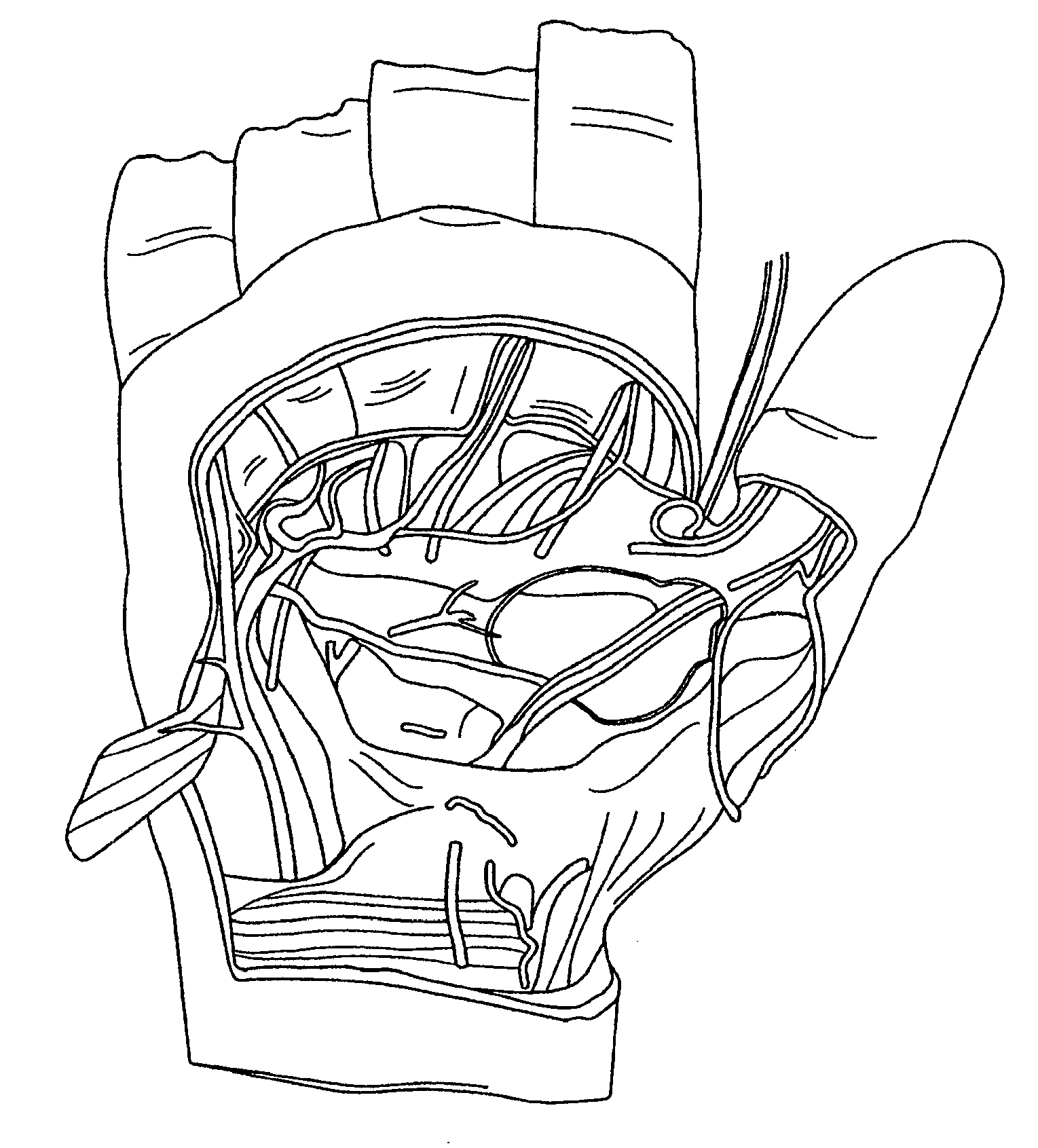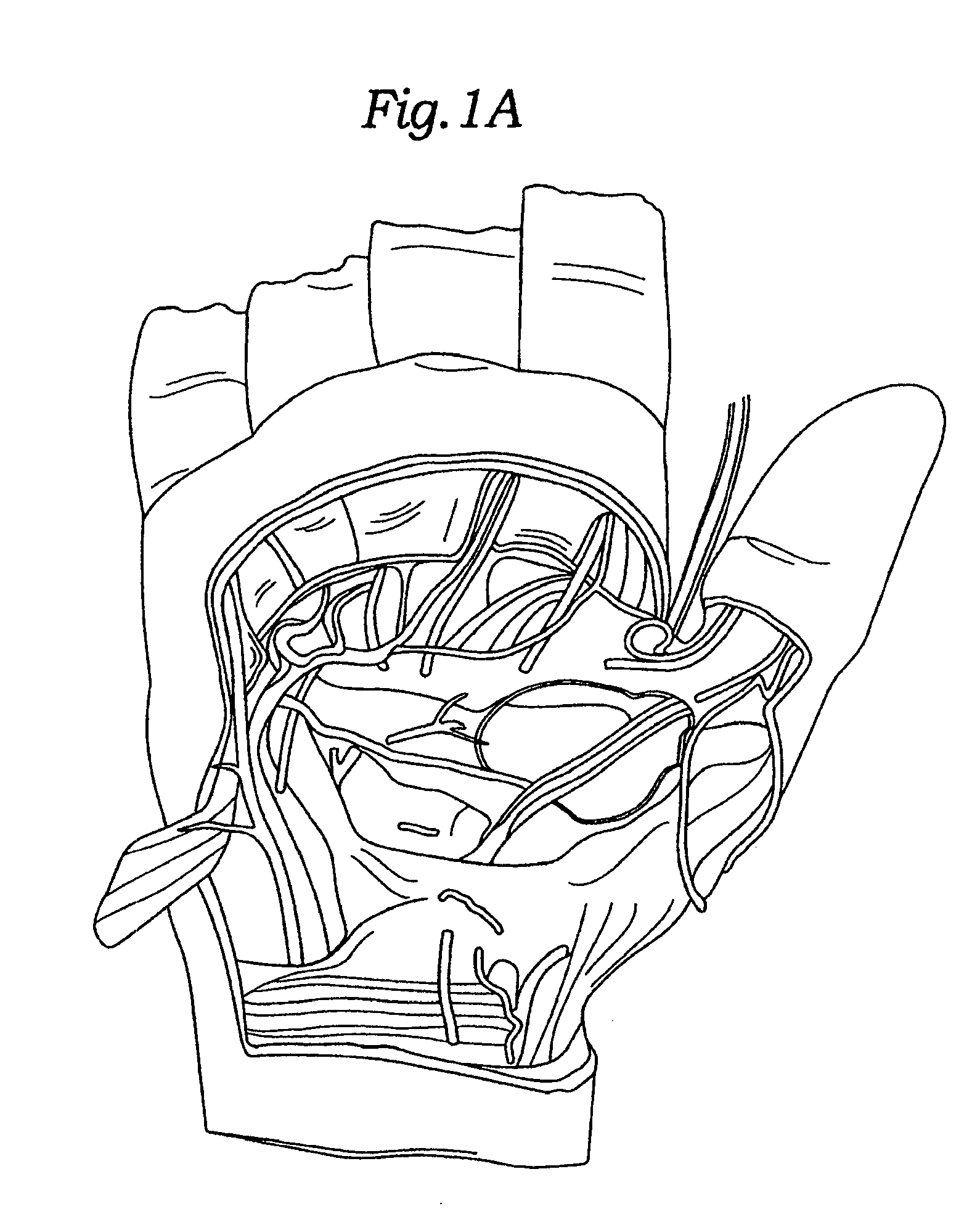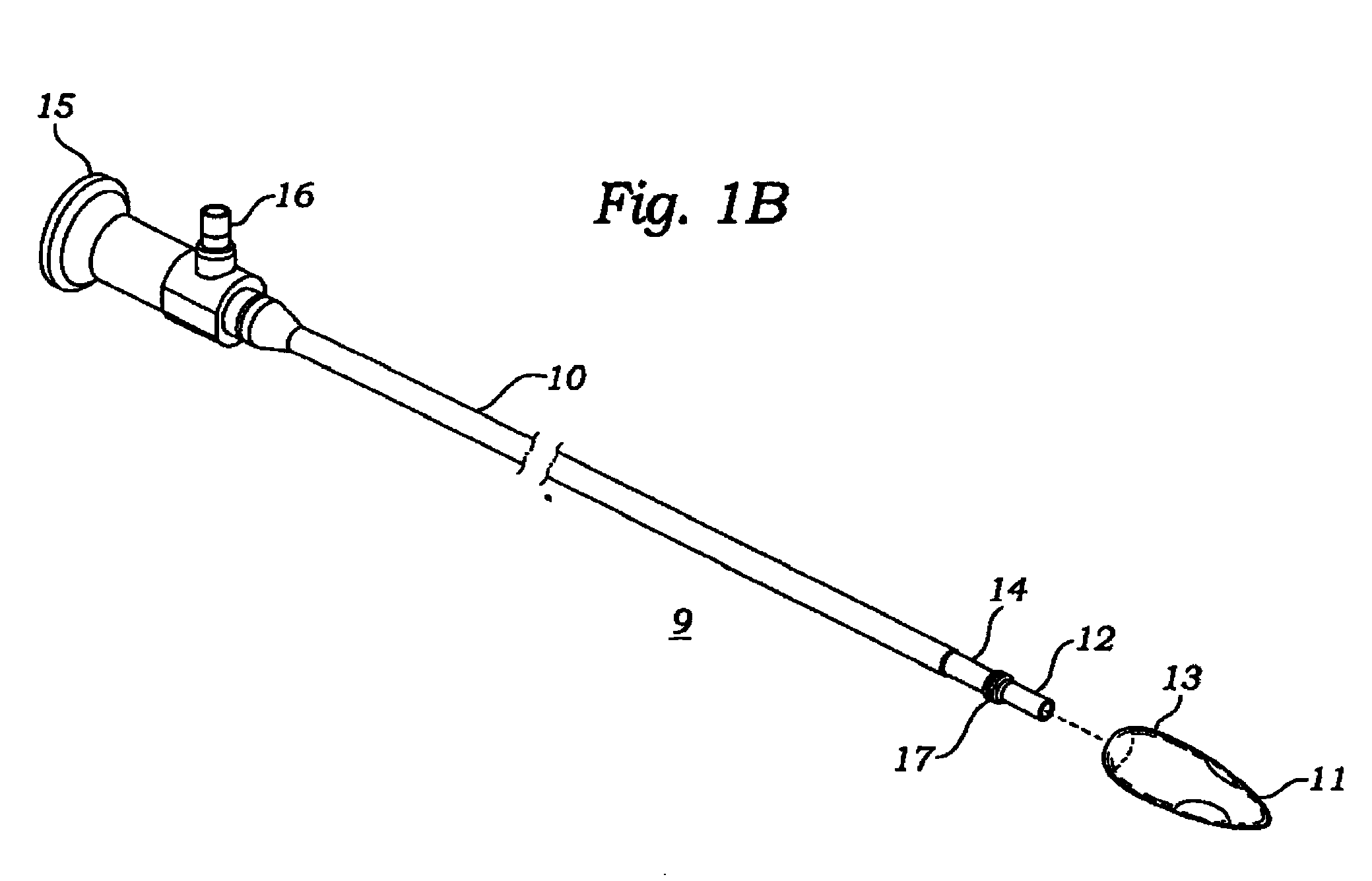Vessel Harvesting
a technology of valves and conduits, applied in the field of surgical instruments and procedures, can solve the problems of artery expansion, artery hemorrhage, and difficult and hazardous harvesting of arterial conduits, and achieve the effect of less risk of artery injury
- Summary
- Abstract
- Description
- Claims
- Application Information
AI Technical Summary
Benefits of technology
Problems solved by technology
Method used
Image
Examples
Embodiment Construction
[0051]Vessel Harvesting.
[0052]In accordance with the present invention, a vessel such as the saphenous vein in the leg or the radial artery in the forearm is selectively harvested for use in another part of a patient's body, for example, as a graft vessel in coronary arterial bypass surgery. The vessel harvesting proceeds with conventional preparation of the patient's leg or forearm for an initial incision at a selected location along the course of the vessel, such as at the knee, groin or ankle for the saphenous vein, or at the wrist for the radial artery, followed by manual tissue dissection to expose the vessel beyond the initial incision. An anatomical space is formed in tissue surrounding the vessel to an extent sufficient to introduce an access port such as a hollow trocar for gas-tight sealed engagement within the incision.
[0053]In accordance with an embodiment of the invention, a rigid endoscope as more fully described later herein is configured at the distal end with one or...
PUM
 Login to View More
Login to View More Abstract
Description
Claims
Application Information
 Login to View More
Login to View More - R&D
- Intellectual Property
- Life Sciences
- Materials
- Tech Scout
- Unparalleled Data Quality
- Higher Quality Content
- 60% Fewer Hallucinations
Browse by: Latest US Patents, China's latest patents, Technical Efficacy Thesaurus, Application Domain, Technology Topic, Popular Technical Reports.
© 2025 PatSnap. All rights reserved.Legal|Privacy policy|Modern Slavery Act Transparency Statement|Sitemap|About US| Contact US: help@patsnap.com



